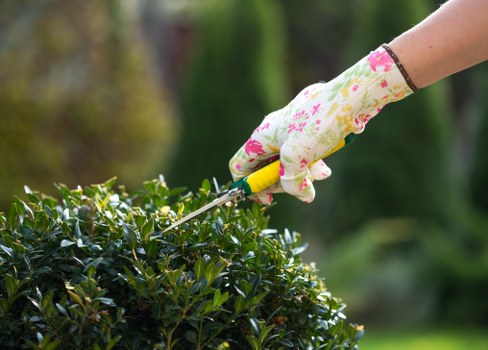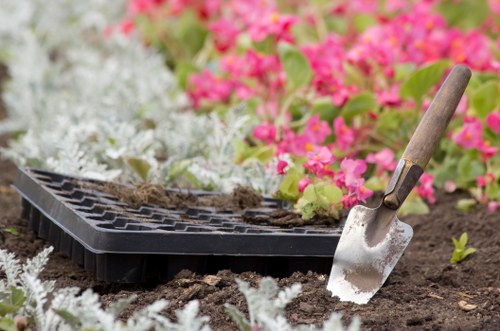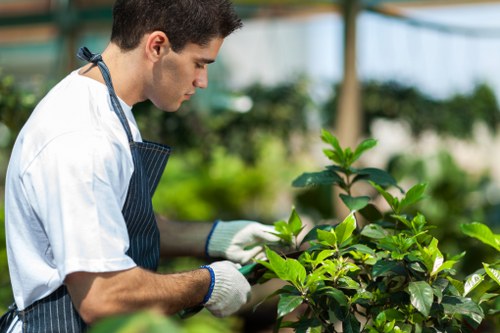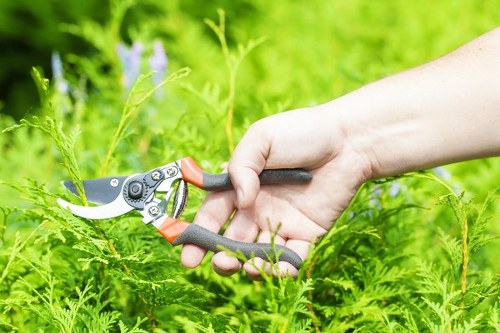Effective Moss Removal for Your Driveway

Moss growth on driveways is a common issue faced by many homeowners, especially in damp and shaded areas. Over time, moss can cause unsightly patches and even damage the surface of your driveway. Understanding the best methods for moss removal driveway can help maintain the aesthetic and structural integrity of your property.
Addressing moss promptly is essential not only for appearance but also for safety. Moss can create slippery surfaces, increasing the risk of accidents, especially during wet conditions. Therefore, implementing effective moss removal techniques is crucial for a safe and attractive driveway.
There are various approaches to eliminate moss from driveways, ranging from natural solutions to chemical treatments. Selecting the right method depends on your driveway material, the extent of moss growth, and your personal preferences regarding environmental impact.

One of the most eco-friendly methods for moss removal driveway involves using vinegar. Vinegar is a natural antifungal agent that can effectively kill moss without harming the surrounding vegetation. To use vinegar, simply mix it with water in a spray bottle and apply it directly to the moss-covered areas. Allow it to sit for a few hours before rinsing thoroughly with water.
Another natural remedy is baking soda. Sprinkling baking soda over the moss and then scrubbing it with a brush can help remove the moss physically while deodorizing the driveway. This method is particularly useful for driveways with a porous surface where chemical treatments might not be suitable.
For those who prefer a more hands-on approach, manual removal using a stiff broom or a specialized moss removal tool can be effective. While this method requires more effort, it provides immediate results and ensures that all moss is thoroughly removed from the driveway surface.

Choosing the Right Tools for Moss Removal
Selecting the appropriate tools is essential for efficient moss removal driveway. A variety of tools, including pressure washers, scrubbing brushes, and moss removal sprays, are available to help tackle the problem effectively.
Pressure washers are highly effective in removing stubborn moss from driveways. The high-pressure water stream can scrape away moss without the need for harsh chemicals. However, it is important to adjust the pressure settings to avoid damaging the driveway surface.
Scrubbing brushes with stiff bristles are another valuable tool for manual moss removal. These brushes allow you to target specific areas and ensure that moss is thoroughly eliminated from cracks and crevices in the driveway.
Preventative Measures to Keep Moss at Bay
Prevention is always better than cure when it comes to moss growth on driveways. Implementing preventative measures can significantly reduce the likelihood of moss returning.
Ensuring proper drainage around your driveway can prevent moisture accumulation, which is conducive to moss growth. Clearing gutters and ensuring that water flows away from the driveway surface are simple yet effective strategies.
Regular maintenance, including sweeping and cleaning the driveway, can remove debris that provides a breeding ground for moss. Additionally, trimming overhanging branches to allow more sunlight to reach the driveway can help deter moss growth.

Chemical Treatments for Moss Removal
For severe moss infestations, chemical treatments might be necessary. Products containing ammonium sulfate or wetting agents are commonly used for moss removal driveway as they kill moss effectively.
When using chemical treatments, it is important to follow the manufacturer's instructions carefully to avoid damaging the driveway surface or harming surrounding plants. Protective gear, such as gloves and masks, should be worn during application to ensure safety.
After applying chemical treatments, allow sufficient time for the moss to die before rinsing the driveway thoroughly with water. This helps to remove any residual chemicals and prevents future moss growth.
Eco-Friendly Alternatives
For environmentally conscious homeowners, there are eco-friendly alternatives to traditional chemical treatments. These alternatives minimize the impact on the environment while still providing effective moss removal driveway.
Natural enzyme cleaners are one such option. These cleaners break down organic matter, including moss, without introducing harmful chemicals into the ecosystem. They are safe to use around pets and plants, making them a popular choice for eco-friendly moss removal.
Another alternative is using boiling water. Pouring boiling water directly onto mossy areas can scald and kill the moss, providing a quick and chemical-free solution. However, caution must be exercised to prevent accidental burns or damage to the driveway surface.

Maintenance Tips for a Moss-Free Driveway
Maintaining a moss-free driveway requires ongoing effort and vigilance. Regular inspections and timely interventions can prevent moss from re-establishing itself.
One effective maintenance tip is to keep the driveway clean and free from debris. Leaves, twigs, and other organic materials can trap moisture and create an ideal environment for moss growth. Regular sweeping and prompt removal of debris can help mitigate this risk.
Additionally, applying a sealant to the driveway can create a barrier that resists moisture and inhibits moss development. Sealants not only protect against moss but also enhance the driveway's appearance and longevity.
Seasonal Considerations
Different seasons present unique challenges for moss management. Understanding how seasonal changes affect moss growth can help you implement timely prevention and removal strategies.
During the spring and autumn, increased moisture and temperature fluctuations can promote moss growth. Scheduling regular inspections during these seasons allows you to address any signs of moss early on.
Winterizing your driveway by ensuring proper drainage and minimizing moisture retention can also prevent moss from thriving. Clearing snow and ice promptly helps reduce the damp conditions that moss favors.